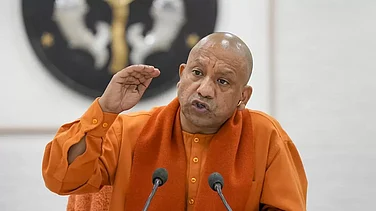What would be the share of industry in U.P. $1 trillion economy?
To attain Yogiji’s dream of making the state a trillion-dollar economy, industry certainly has to play a crucial role. Secondary and tertiary sectors together already contribute nearly 68% to the state GDP. These include manufacturing and the service industry where the state is attracting investment from across the globe including electronics manufacturing, handloom & textile manufacturing, food processing, IT & data centre services, etc. Plus, investor-friendly policies and ease of doing business reforms will further help the state in becoming a trillion-dollar economy.
All industrial states have grown on the back of tax breaks provided to companies. Under GST regime, how do you plan to attract companies to your state?
Advertisement
The existing industrial investment and employment promotion policy was prepared after the implementation of GST and hence considers due incentives on the same. The policy allows reimbursement of the net GST amount deposited in the state's account to 90% for small industries for five years, 60% for medium industries for five years, 60% for large industries for five years and 70% for mega/ mega plus/ super mega category industries for 10 years.
Kanpur, once known as the Manchester of India has lost its sheen as an industrial hub. Is there a way to take it back to its glorious days, particularly considering it still being home to a lot of small and medium enterprises? What measures is the government taking in that direction?
Advertisement
The government is very much aware of Kanpur’s importance as an industrial centre and has taken a slew of initiatives to ensure the city retains its past glory. Some of the initiatives taken in that direction are the approval of the 62.7 km Kanpur Lucknow Expressway (NE-6) by NHAI, which is a six-lane access controlled road connecting Shaheed Path in Lucknow to Azad Chauraha near Kanpur's Ganga Bridge. The elevated expressway, once completed, shall reduce the travel time from Kanpur to Lucknow to around 40-50 minutes. Another, 93 km Kanpur Outer Ring Road project by NHAI is also proposed. This six-lane access controlled expressway is planned to be built in multiple phases and will be connected to the under-construction Lucknow Kanpur Expressway. It will pass through Sachendi, Ramaipur, Rooma, Chakeri Airport, Trans Ganga City and Mandhana. Kanpur is also one of the six nodes of the Defence Corridor -- a project meant to give a push to the indigenous manufacturing of military goods. While the inauguration of the Aligarh node was done by PM Narendra Modi last year, the bids for the development of four nodes including Lucknow, Kanpur, Chitrakoot and Jhansi were invited in March. We are also building the Trans Ganga City -- spread over 1,144 acres – which is being developed as a model industrial township with the best-in-class infrastructure and high-end amenities conducive for industrial development. To boost exports and provide logistical ease to industries operating in the region, a multimodal logistics park is being set-up by Dedicated Freight Corridor Corporation of India. (DFCCIL)
Industrial development comes at the cost of environment. How do you plan to balance industrial growth with sustainable development?
We are promoting industrialisation but not at the cost of the environment. In fact, sustainable development is our core agenda, where employment generation and balanced regional development is being focused upon. The state policies are in full agreement with the principle of sustainable growth and therefore ensures clean and green industrialisation. In tandem with the Centre’s National Clean Air Management Programme (NCAP), U.P., too, has launched the UP Clean Air Management Programme with an objective of improving the air quality across the state. The programme supports low carbon development pathways for Uttar Pradesh to help shift the trajectory of development onto a more sustainable and climate compatible path. In light of this, the state government encourages greater compliance of the industries with the environmental standards and facilitates them in the adoption of technologies that reduce air pollution. In Uttar Pradesh, -94% of industrial units are adhering to the UPPCB’s (Uttar Pradesh Pollutional Control Board) air emission norms. Also, under the industrial policy, the state government promotes need based financial assistance for the development of a Green Industrial Estate.
Advertisement
UP has a large workforce that migrates to other states for work. Have you set any targets to reduce the outflow of human capital?
Absolutely. To check mass migration of the state’s workforce, we have ensured that the current Investment and Employment Promotion Policy incentivises employment generation. The units generating minimum employment of 200 direct workers including skilled and unskilled are provided 10% additional EPF reimbursement on employer's contribution. The policy also stresses on a minimum employment for categorisation as a mega project for applicability of incentives. The recently facilitated investments in the ground-breaking ceremony 3.0 (GBc 3) shall lead to generation of five lakh jobs. Similarly, the investments grounded post the GBC 1 & 2 lead to creation of another 4,50,000 jobs.
Advertisement
Some of the key steps taken as part of 'Ease of doing business' initiative are:
1. The Department for Promotion of Industry and Internal Trade (DPIIT) has been releasing the Ease of Doing Business ranking among States/UTs since 2014 based on the Business Reform Action Plan (BRAP) been implemented in the States/UTs.
2. DPIIT has introduced a new assessment system wherein states/UTs shall be categorised among achievers, aspirers and emerging states thus eliminating the ranking of states/UTs in the past.
3. The state has retained status under the "achievers state" since 2019. Uttar Pradesh was at 2nd position among all the states/UTs in the Ease of Doing Business ranking 2019. Previously, it was at the 12th position in BRAP 2017-18 rankings and has improved by 10 ranks in the EoDB 2019 ranking which was unprecedented achievement.
Advertisement
4. U.P. has implemented more than 500 reforms as part of the BRAP exercise covering the single window system; investment enablers; land administration and transfer of land and property; environment registration enablers; labour regulation enablers; obtaining utility permits; paying taxes; construction permit enabler, inspection enabler; contract, etc.
5. More than 24 departments have been digitized (from offline to online) for obtaining and processing end-to-end applications
6. Inclusion of more than 100 services delivery timelines within UP Janhit Guarantee Act for timebound licenses approval. Some of the key reforms implemented as part of this exercise are:
Implementation of the 'Nivesh Mitra' single window system for one stop licenses approval system in the state
Advertisement
Online availability of land bank including its integration with Industrial Information System (11), Govt. of India so that a foreign investor can also compare availability of land bank from states level to districts level
Key steps taken/achievements as part of Ease of doing business initiative:
Ease of Doing Business in Uttar Pradesh: 1 Department for Promotion of industry and Internal Trade (DPIT), Government of India is releasing Ease of Doing Business ranking among States/UTs since year 2014 based in Business Reform Action Plan (BRAP) been implemented in the States/UTs.
DPiIT has introduced a new assessment system wherein States/UTs shall be categorized among Achievers, Aspirers and emerging states thus eliminating the ranking of States/UTs which have been in the past.
3 Uttar Pradesh has retained its category under "Achievers State" since year 2019 till now Uttar Pradesh was at 2nd position among all States/UT in Ease of Doing Business ranking 2019. Previously, Uttar Pradesh was at 12th position in BRAP 2017-18 rankings and have improved by 10 ranks in EoDB 2019 ranking which was unprecedented in the journey of EODB ranking
4. State has implemented more than 500 reforms as part of BRAP exercise covering reform areas Single Window System; Investment Enablers; Land administration and Transfer of Land and Property, Environment Registration Enablers; Labour Regulation Enabiers Obtaining Utiity Permits; Paying Taxes; Construction Permit Enabler inspection Enabler, Contract etc.
5 More than 24 departments have been digitized (from offline to online) for obtaining and processing end-to-end applications
6. incdusion of more than 100 services delivery timelines within UP Janhit Guarantee Act for tumebound licenses approval
Some of the key retorms implemented as part of this exercise:
Implementation of Nivesh Mitra' single window system for one stop licenses approval system in Uttar Pradesh
Online availability of land bank including its integration with Industrial lnformation System (115), Govt. of India so that a foreign investor can also compare availability of land bank from states level to districts level
Eased out reforms -- single integrated return under various labour laws















 Just one email a week
Just one email a week